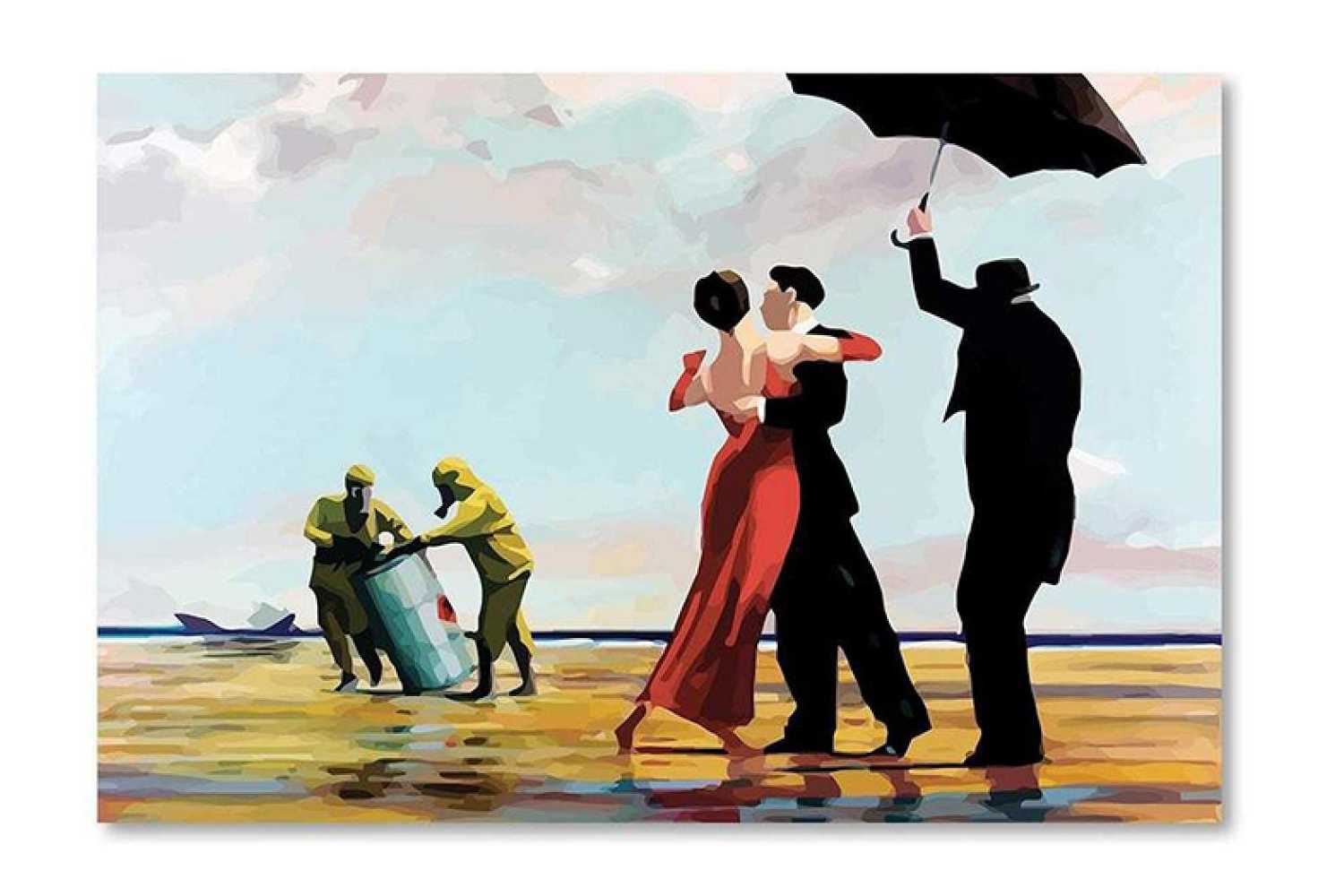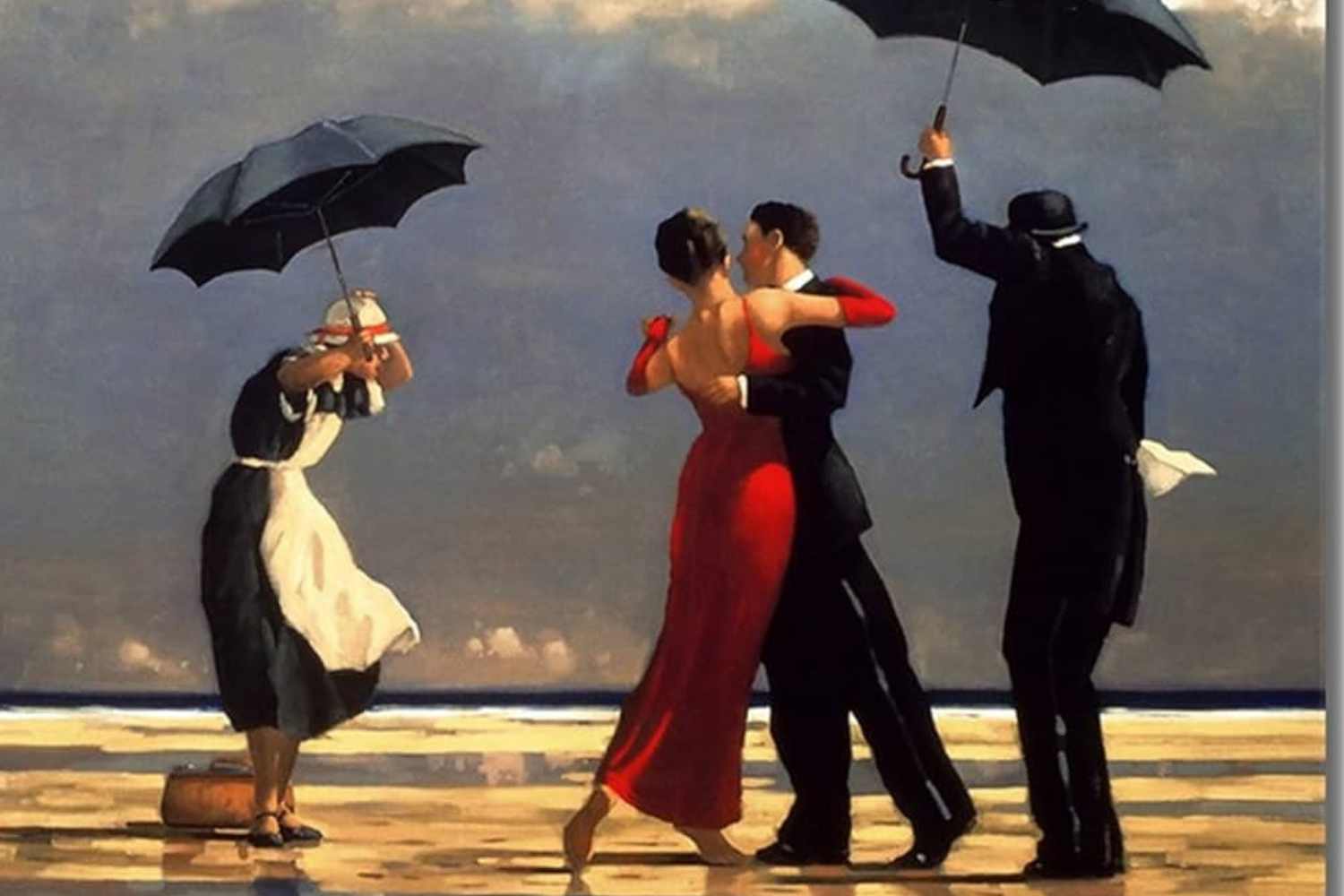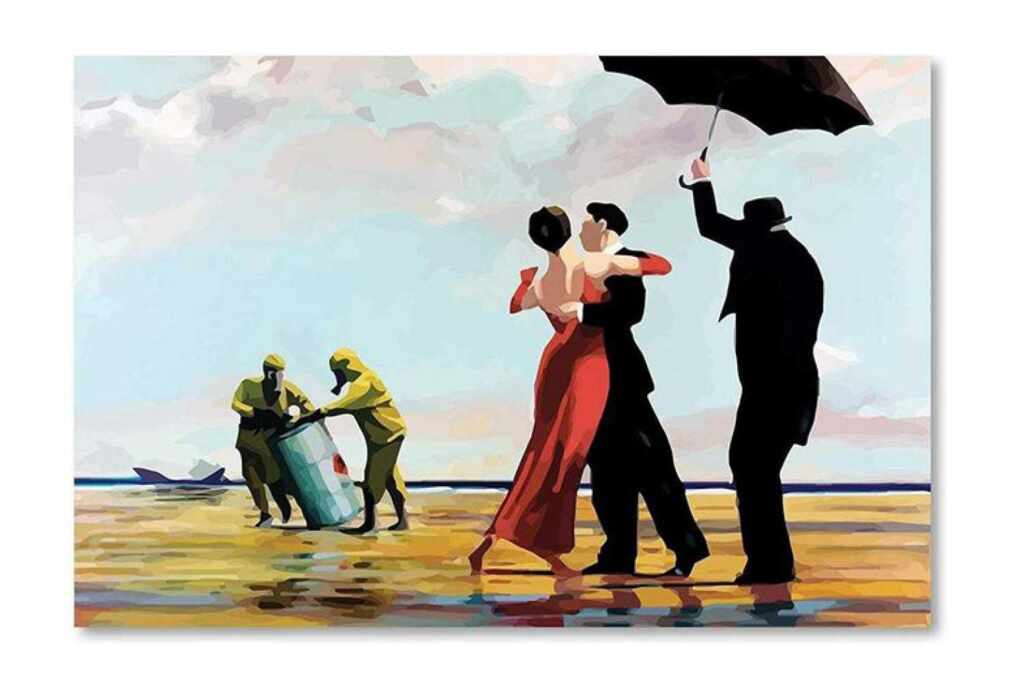Banksy’s reworked version of Jack Vettriano’s The Singing Butler, titled Crude Oil (Vettriano), sold for a record $6.2 million at Sotheby’s auction. The piece, created in 2005, replaces the romantic beach setting with a dystopian landscape, featuring workers in radiation suits and gas masks transporting toxic waste. The sale not only shocked with its price but also raised curiosity about the anonymous buye

“Crude Oil (Vettriano)” – Bansky @amazon
There has ever been an air of mystique surrounding art auctions, yet when the subject matter is Banksy, the mystery heightens and the value skyrockets. The latest twist is out of London, where Sotheby’s sold a painting from the street artist for a record €5 million. The painting, Crude Oil (Vettriano) or Toxic Beach, is a reinterpretation of Scottish painter Jack Vettriano’s most famous painting, The Singing Butler. Vettriano’s work had sold for £744,800 (approximately $922,000) in 2004, a record price for a Scottish artist at that time.
Why is this “new” version so special?
Banksy has transformed the idyllic beach dance scene, replete with formally attired butler holding an umbrella, into a scene of environmental decay.

Jack Vettriano’s original work “The Singing Butler” @amazon
The original painting by Jack Vettriano featured a romanticized beach scene where a couple is dancing while a butler is in the distance holding an umbrella. In Banksy’s painting, however, the romantic scenery is replaced with a poisonous landscape. Two laborers in radiation suits and gas masks are depicted carrying what appears to be a barrel of toxic waste.

“Crude Oil (Vettriano)” – Bansky @amazon
It’s a piece that is complete with satire and social commentary—trademarks of the Bristol-born artist.
An anonymous buyer for a provocative artwork
Not just the price is getting headlines, but the fact that the artwork’s new owner is unknown. Someone with £3.7 million (nearly $4.6 million) to invest and an appreciation for protest artwork has decided to take home a bit of contemporary art history. Crude Oil (Vettriano) first appeared in 2005 as part of a show of Banksy’s provocative works. Now, the painting will enter a private collection, out of the public eye—at least until the next auction.
The timing of the sale is no coincidence. On March 1, 2025, the art world lost Jack Vettriano, who was discovered dead in his Nice apartment at the age of 73. The news of his passing drew new attention to his work, reigniting interest in each piece bearing his name.
Jack Vettriano: a painter beloved of the public, less so by critics
Jack Vettriano, or Jack Hoggan, as he was born in 1951 in Methil, Scotland, had an unlikely artistic journey. Born into a non-artistic family, he started working at the age of 10 to help fill the family purse, and at 16 left school to take up an apprenticeship in the mining industry. Painting came to him by chance when he received a watercolor set as a gift on his 21st birthday. A self-taught artist, he began by copying the Impressionists before finding his own style, which blends noir atmospheres, retro elegance, and cinematic romance.
His professional debut was in 1988 at the Royal Scottish Academy, where his first paintings were sold within a day. His career kicked off from there, and he went on to exhibit in London, New York, Hong Kong, and Johannesburg.
Despite undeniable commercial success, Vettriano was a divisive character: the public loved him, but critics were less than impressed. His artwork was often dismissed as “poster art” that was unoriginal. But one thing was for sure: they sold. The Singing Butler was on thousands of greeting cards a year, earning the artist £500,000 (or about $620,000) annually in royalties.
Vettriano’s legacy and Banksy’s irreverent twist
Banksy’s reinterpretation of The Singing Butler is a challenging act of disruption. Where the original summons nostalgic glamour, the street artist’s version reveals the dark underside of the dream. Banksy subverts perception, taking an icon of beauty and romance and turning it into a social commentary, encouraging the viewer to question the world we live in.
What would Vettriano have made of this reworking? Hard to say. He was not one for controversy and had always fought his corner, regardless of the critics. Surely, however, to witness his own painting taken apart and put back together with an opposing meaning cannot be easy for any artist.
Meanwhile, the art world has spoken: Banksy’s work continues to turn heads (and open wallets). Sotheby’s auction demonstrated once again the power of his message.
The question now is: where will Crude Oil (Vettriano) end up? Will it adorn some lavish mansion, or will it be kept from sight, perhaps relegated to a vault? Whatever happens to the piece, one thing is certain: the mystery and value of Banksy just continue to grow.
